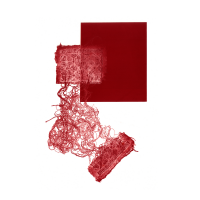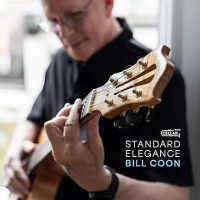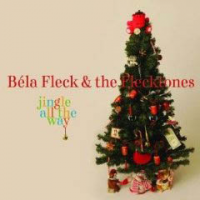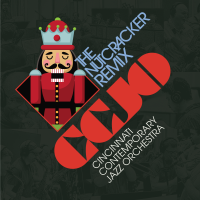Home » Jazz Articles » Album Review » George Russell: George Russell Sextet at the Five Spot
George Russell: George Russell Sextet at the Five Spot
The most astounding thing about this recording is Russell’s ability not only to synthesize, but also to expand and redefine, the bop and modal vocabularies of the day. On the bop side, Russell rewrites "Sippin’ at Bells" in a three-part harmony as dense and bitter as black coffee, then sets his soloists free on the up-tempo blues, throwing some stop-time hits in their paths to add some spice. The cutting edge of bop returns on the final track, John Coltrane’s "Moment’s Notice," a tune that at the time was hot off the presses, far from the familiar jam vehicle it is today. Navigating the crowded harmonies with an inspired ease, the group runs the tune in pretty faithful fashion, although Russell throws in some trademark voicings on the intro and the tag. Again, stop-time plays a prominent role in the soloing.
Russell’s modal sensibilities come through clearly on his original tune "Swingdom Come" and on "Dance Class," a piece by a then-unknown composer named Carla Bley. (Bley’s career would soon get another important boost by Art Farmer’s 1965 quartet with Steve Kuhn.) Some credit Russell, rather than Miles Davis, as the true originator of modal jazz. Whatever the case, this album makes certain that very shortly after the 1959 release of Davis’s Kind of Blue, Russell was taking the new form to the next level of advancement.
Add the blues to bop and modalism and you complete the musical trinity that holds the album together. Not only on "Sippin’ at Bells," but also on David Baker’s "121 Bank Street" and a second piece by Carla Bley, "Beast Blues," Russell’s sextet demonstrates that the blues is infinitely malleable, applicable even in the most rarefied theoretical contexts.
Track Listing
Sippin' At Bells; Dance Class; Swingdom Come; 121 Bank Street; Beast Blues; Moment's Notice.
Personnel
George Russell
composer / conductorGeorge Russell, piano; Al Kiger, trumpet; David Young, tenor sax; David Baker, trombone; Chuck Israels, bass; Joseph Gayle Hunt, drums.
Album information
Title: George Russell Sextet at the Five Spot | Year Released: 2000 | Record Label: Verve Music Group
Tags
PREVIOUS / NEXT
Support All About Jazz
 All About Jazz has been a pillar of jazz since 1995, championing it as an art form and, more importantly, supporting the musicians who make it. Our enduring commitment has made "AAJ" one of the most culturally important websites of its kind, read by hundreds of thousands of fans, musicians and industry figures every month.
All About Jazz has been a pillar of jazz since 1995, championing it as an art form and, more importantly, supporting the musicians who make it. Our enduring commitment has made "AAJ" one of the most culturally important websites of its kind, read by hundreds of thousands of fans, musicians and industry figures every month.

























